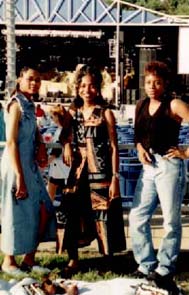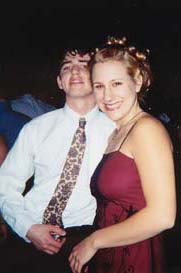Teen Body Images Skewed By Magazines
Girls Making Unhealthy Comparisons To Skinny Models
BOSTON, Posted 10:14 p.m. March 2, 1999 --
Even a magazine editor admits that skinny models featured on covers can make teen girls dissatisfied about their body image."Young girls reading magazines certainly compare their bodies to the models that they see in there and come away with sometimes unhappy feelings with the way they look," Glamour executive editor Stephanie Dolgoff said Monday.
But she said women's magazines are being unfairly singled out by a new study that criticizes publications for feeding an unhealthy body image to young girls --as if teens can't "discern between what's fantasy and what's reality."
According to the study, published in the March issue of the journal Pediatrics, more than two-thirds of girls in grades five through 12 said magazine photos influenced their notion of the ultimate figure.
Forty-seven percent said they wanted to lose weight because of those pictures. Only 29 percent of the 548 girls interviewed were actually considered overweight.

"Even among the girls who don't read the magazines, very frequently, they, too, felt influenced," said Alison Field, an epidemiologist at Brigham and Women's Hospital in Boston and the study's lead author. "It really does permeate society."
The girls filled out questionnaires during mandatory gym classes in an unidentified working-class suburb north of Boston. The study was conducted in 1991, just as thin, "waiflike" models were coming back into vogue.
Each girl was asked to provide her age, weight and height and was asked whether she regularly read magazines such as Seventeen, Glamour or the now-defunct Sassy. The girls answered questions about dieting habits and how they viewed their bodies -- satisfied or dissatisfied.
Sixty-six percent of the girls said they wanted to lose weight. Researchers said they suspected the number would have been higher if the study focused exclusively on older teens.
About one-third of the respondents were in elementary school. Even at that age, half reported reading fashion magazines at least two to five times a month. High-frequency magazine readers of any age were three times more likely to exercise and lose weight than infrequent readers, and three times more likely to have unrealistic body expectations.
Editors at Seventeen, which targets teen-age girls, and Glamour, which targets women ages 18 to 35, said the results weren't surprising.
"The magazines reflect what's going on in the runways because they're fashion magazines and the models on the runways are stick-thin," said Patrice Adcroft, editor in chief at Seventeen.
This month's (March 1999) issue of Seventeen includes -- for the first time -- a plus-size model in a fashion spread. The young woman, who wears a size 14, is paired with very slender models in an article on prom dresses.
Field's study used national weight standards from the 1970s to determine what qualified as overweight. For example, a 5-foot-4 16-year-old girl would be considered overweight if she weighed more than 145 pounds. The healthy weight range for a girl that age would be between 105 and 140 pounds.
For a 13-year-old 5-foot girl, the overweight benchmark was 120 pounds or higher. The median healthy weight for that age and height is 90 to 95 pounds.
On a positive note, the study found that girls who read fashion magazines were more likely to exercise rather than diet to lose weight -- a signal that the publications are teaching girls about the importance of good health, Ms. Field said.
"We certainly have a problem with overweight" in America, she said. "But the answer is not to make everyone overly concerned with their weight."



